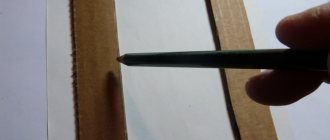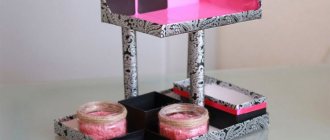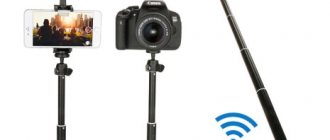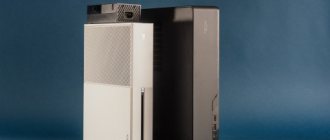Nowadays, when people increasingly resort to using lies in their speech, the need to check a person for the veracity of his statements increases. There are many ways to detect lies during a conversation and even entire sciences devoted to human facial expressions when exposed to external stimuli from the interlocutor, but the most effective method of detecting deception is considered to be a polygraph, which is better known among people as a “lie detector.”
This device has been in service with law enforcement agencies for quite a long time, but in order to check a person it is not necessary to go to the police, since it is very simple to build a lie detector with your own hands, given the necessary materials and free time.
How to make a lie detector at home yourself
An invention can be improved, a creation can only be imitated.
Maria von Ebner-Eschenbach
- 1. Processes occurring inside and outside a person during a survey
- 2. Required materials for assembly
- 3.Assembly and preparation for work
- 4.Accuracy of readings and other variations of the device
- 5.Afterword
- How to pass a polygraph at the Ministry of Internal Affairs: questions when applying for a job
- Ericksonian hypnosis in NLP: how does it work?
- 3 effective ways to control your pulse and heartbeat
- Identifying a liar based on the direction they are looking
- Can a polygraph lie?
How does a polygraph work, what does it react to?
A polygraph is a psychophysiological study. The device consists of:
- sensors that monitor data on the psychophysiological state of the subject’s body;
- A computer that records and processes data from sensors;
- output device in the form of an oscilloscope, printer, monitor screen for displaying information received by sensors on a diagram.
The detector detects and records microstress in the subject. Sensors are attached to such places on the human body where the psychophysical state of the body and changes can be clearly identified:
- breathing in the chest area;
- breathing in the abdominal area;
- electrical conductivity of the skin;
- blood filling in peripheral vessels;
- heart rate.
After the device is installed, the subject begins to ask questions. First, simple questions are asked to check the equipment. These could be questions about first name, last name, place of birth, marital status. The answer is given 15-20 seconds, which allows you to think before answering. Once the polygraph examiner begins to understand how the machine responds to “honest” answers, he is surprised to begin asking basic questions. During the procedure, the state of the body is recorded before the answer, during its utterance and after.
Arduino Program Explanation
To work with this project, you will need the latest version of the Arduino IDE. Unlike older versions of the Arduino IDE, in which only text data could be transferred to the computer in the serial communication monitor window, in the latest version of the Arduino IDE this data can be displayed in the form of a graph, which will allow us to identify places where the pattern (pattern) changes. graphics and thereby determine that the subject is telling a lie.
To open the graph plotter window in the Arduino IDE, go to the tools menu and you will see this item under the serial monitor item.
The full code for the project is at the end of the article - you can copy it and download it to your Arduino board.
Why is a polygraph dangerous?
A polygraph is a medical-biological device capable of recording a psychophysiological surge and reaction of the human body. In order to successfully pass a lie detector test, you must not only master your emotions perfectly, but also control your heart rate and blood vessels. That is why the polygraph examiner, before conducting the test, always asks whether the subject has any health contraindications.
The device closely interacts with the subconscious: emotions, memories, experienced stress. This is the main danger of the device. Although it does not physically affect a person in any way, it can provoke the appearance of:
- hysterics;
- heart attack;
- nervous attack;
- epilepsy;
- miscarriage;
- asthmatic attack.
Who should not take a polygraph for health reasons?
According to the existing law on what diseases cannot be tested for a polygraph, citizens suffering from:
- bronchial asthma;
- colds with severe cough and runny nose;
- cardiovascular diseases;
- hypertension;
- strong alcohol intoxication;
- drug addiction;
- deviations in mental activity;
- damage to the central nervous system;
- mental or physical exhaustion;
- pain syndrome;
- pregnancy (the fetus also experiences fear and anxiety, which is immediately recorded by the device);
- epileptic seizures.
What should you not do before a polygraph?
An upcoming polygraph test causes stress and fear in many people, even if the person intends to tell only the truth. This condition occurs due to ignorance of the principles of operation of the device, fear of being caught in a lie. That's why many people ask how to prepare for a lie detector test, and what not to do before a polygraph:
- Do not try to predict the test questions, this may cause self-judgment and unnecessary anxiety.
- Relax, thanks to good health, physiological reactions will be as accurate as possible.
- Don't treat test day as something special. Start your morning with a run and a cup of coffee.
- Do not take any medications unless prescribed by your doctor, otherwise antidepressants will interfere with your test results.
Is it possible to fool a polygraph?
Is it possible to fool a polygraph? Yes, it's possible. When figuring out how to pass a polygraph without problems, this can be done, for example, by simply biting the tongue and causing tension in the legs, mentally counting sheep. Each of these actions will cause physiological reactions that will be immediately recorded by the device. Mental arithmetic will prevent the subject from fully comprehending the question asked, which will lead to an uncertain result.
History remembers the case of the unjustly convicted Fey Floyd. After failing a polygraph test, he was convicted of a murder he did not commit, and it was only several years later that the truth came out. Floyd decided to take revenge on his offenders and became a real expert in the field of polygraph testing. He taught prisoners who confessed to him that they had committed a crime how to deceive a polygraph, as a result of which most of the criminals were able to pass the lie detector and were found innocent.
Afterword
In addition to this home lie detector, which reveals deception due to a change in skin resistance during a survey by 3-5%, there are a huge number of other variations of the same device.
They all use different principles:
- some monitor the subject’s blood pressure,
- others are triggered by changes in palm moisture during interrogation.
But they all have one task - testing a person for truthfulness and identifying lies.
The idea of a polygraph originated many years ago. The impetus for its development was the research of the Italian physiologist A. Mosso. Such techniques made it possible for the first time in 1902 to prove the innocence of the defendant. Today, the polygraph is used to test applicants for positions, so you can often hear the question, how to deceive the polygraph?
Ways to fool the polygraph
There are several ways to fool a lie detector:
- Reduced sensitivity of sensory analyzers. To do this, drink some alcohol the day before the test. On the day of the test, your reactions will be somewhat slowed down, and the polygraph will not be able to give an accurate result.
- Medications. Before using them, it is important to know and understand your body’s reaction to “chemistry”. So, if a subject has taken psychotropic substances for the first time, he may, out of habit, begin to behave inappropriately, which a polygraph examiner will immediately notice.
- Non-chemical method
. To do this, you need to not sleep for several days. But it is worth remembering that an experienced polygraph examiner will always notice such a condition. - Control of emotions
. It is important not only to be able to give the desired reaction to a question, but also to control facial expressions. - Physiological reactions
. For example, some, in an attempt to counteract the polygraph, came up with the idea of putting a button in the shoe under the big toe. When pressed, the pain causes a false reaction.
During apartment renovations, especially in old houses, an electrical wiring diagram is required. Otherwise, when drilling holes or tapping, you can damage hidden wires that are energized.
Important! Regardless of whether you know where the wiring is located, work in the room should be carried out during a power outage.
A metal and hidden wiring detector is used for searching.
Such a device can be purchased at a power tool store. This is essential equipment for repair teams. However, if you are simply renovating your apartment over a period of several years, the cost of purchasing it is irrational. The design of the device is simple. A craftsman who knows how to hold a soldering iron can make a wiring detector with his own hands. In this case, its value will tend to zero.
How to make a wiring detector yourself?
There are two main concepts:
- Voltage multiplication principle;
- A radio receiver on a microcircuit that detects an electromagnetic field.
Both designs are easy to manufacture and are assembled using accessible components. If you are into electronics, you can pick up radio components in your workshop. Even if you buy them on the radio market, the cost is incomparable with a factory sample.
Determinant of hidden wiring on transistors
Components for manufacturing:
- A multistage voltage multiplier will require ultra-sensitive transistors. BC547 has proven itself well. These are silicon miniature bipolar triodes, with an npn structure. They have a fairly high gain with minimal noise;
- Low power resistors. 1Mohm, 1kOhm and 220Ohm. For the first, second and third cascade, respectively;
- Indicator LED;
- Batteries or accumulators;
- Frame.
Schematic diagram of the device:
The first stage receives a weak signal from the antenna, shown in the diagram with an arrow. It is an electromagnetic field created by electrical wiring.
Tip: To increase the search efficiency, it is recommended to plug in a low-power electrical appliance that creates interference, for example, a room fan.
A small current appears at the emitter, which is repeatedly amplified by the second stage. The almost finished signal is fed to the base of the third transistor (cascade). After amplification, an electric current sufficient to light up the LED is generated at its emitter. The device is powered by 6 volts.
A simple detector that will show whether a person is lying or telling the truth. Of course, it is far from a real, modern lie detector - a polygraph, but it deserves attention, since anyone can make it with their own hands. Like any, even the most modern polygraph, it does not show 100% that a person is lying. It shows that the human body has changed its state in the readings that the detector tracks. And the detector operator decides whether to take these readings into account or not.
: Making a case
Show 3 more imagesThe plan is to create a small compartment in which the finger pads will be folded and make 3 holes for the LEDs to peek out of. The case can be made from cardboard and, if you want the same case as mine, then do the following:
- Cut two rectangles 15*3 cm
- Cut one rectangle 15*5 cm
- Three rectangles 5*3 cm (make a hole for USB in the middle of one of them)
- One rectangle 9*5 cm
- One rectangle 6*5 cm
A 5*15 rectangle is the base. Two pieces 15*3 and two pieces 5*3 are glued to the sides of the base. Next, glue the third piece of 5*3 to the base at a distance of 6 cm from the edge (closer to the middle - see photo). Now you should have a rectangle divided into two parts - one 6 cm long and the other 9 cm. In the 6 cm long part we will put the electronics, and in the other part we will put the finger pads.
Next, in a piece of cardboard 6*5 cm, cut three holes according to the size of the diodes and glue it to the 6 cm side (it will be the lid). Finally, we need to tape the short side of the 9*5cm rectangle to the remaining open part of the box (this piece of cardboard will act as a lid that opens up and down, giving us access to the finger pads).
The principle of detecting lies
The device is a threshold detector that measures the resistance of an area of the human body. The device reacts to changes in this resistance, and depending on the reading, the state of the indicator changes. In general, the resistance of the human body is by no means constant; it depends on many factors. Thanks to this property, we will track a sharp change in this value.
What is needed to build a lie detector
I will not list all the elements - they can be seen in the diagram. There are no special requirements for them - you can use any. Transistors 2N3904, domestic analogs of KT315, KT3102, or any others of the same structure.
Scheme of a simple polygraph
The circuit is built on three transistors. The first transistor is a DC amplifier. A Schmitt trigger is built on the other two, which can be stably in one of two states: false - true. Using a variable resistor, the response threshold is adjusted.
Lie detector sensors
To take readings from a person we need two sensors. I made them into Velcro clothes by gluing aluminum foil to the back and connecting wires to it. The sensors can be of a different design, the main thing is that they have a large area of contact of the current-carrying part with the human body.
Circuit assembly
I assembled the circuit on a breadboard. I added a switch and a capacitor for power supply, which are not on the diagram. I think it will be better and more stable this way, although you can do without all this.
Detector body
The body was made from a tin box. Drilled a hole for the variable resistor. I put a piece of cardboard on the bottom so that the board does not short out to the case. I glued the switch with hot glue and propped the battery up with a piece of insulation. Common (minus) connected to the body. The design turned out to be shielded and it is not afraid of interference from outsiders.
Everything is ready - tests
Now your lie detector is ready to use.
Place sensors on the “suspect’s” fingers. Turn on the power to the circuit. Turn the variable resistor smoothly until green (True) lights up and red (False) goes out. This will be the threshold. Ask the “suspect” a question. If after a few seconds the red light comes on, he is lying. Back in the 19th century, scientists proved that deception and denial of guilt cause a number of physiological changes in the human condition. The first thing that scientists noticed was high blood pressure, sweating on the skin, dry mouth, heavy inhalations and exhalations. Based on these phenomena, scientists, psychologists and physiologists developed a polygraph. Current lie detectors can determine whether a person answered the truth in more than 90% of cases.
The polygraph includes several measuring instruments with recording devices connected to them:
- sensor on an elastic bracelet, which is attached above the elbow, and gives readings about changes in pulse and pressure
- sensor, which is placed at the same level with the chest, to transmit the breathing rhythm to paper
- 2 sensors will be placed on the hands to record changes in the test subject's skin resistance.
Testing is carried out as follows: a person is asked a series of questions, he must give answers to them yes or no. To begin with, they ask light questions that are not related to the incident in order to see what a person’s normal reaction is, then they ask questions that are directly related to the incident. And immediately a deviation from the norm is observed. This is shown in Figure 1.
For a more accurate test of the subject, there is a method with any cards. The test taker is shown 10 cards, of which he must remember only one. Then they are shuffled, and he must answer “no” ten times. It turns out that one time he will still lie. This answer will be recorded and used in a further survey.
In the United States, more than twenty national institutions (this also includes the police, FBI) have had more than 500 lie detectors since 1965. Most private institutions, such as a bank, regularly test their employees with a polygraph. Companies that manufacture lie detectors conduct training courses for subordinates who then work with the lie detector.
: Making finger clips
Now that the basics of the project are complete, we can start adding to it. Let's start by creating clips for the fingers - this will make the device more convenient, creating a reliable connection between the fingers and the wires. Glue the foil to the outside of the Velcro (you need to glue it to both parts: the “hooked” part and the “curly” part). Now wrap it around your finger until it forms a tight ring (see photos). Then secure the bare end of the wire coming from pin 0 to the foil. Do the same with the 5V pin. Make sure to create a reliable connection.
How to make a lie detector at home
If you decide to try yourself as a polygraph examiner, but for now you do not want to buy a lie detector for several thousand dollars. You can purchase it from us, our company sells not only new but also used polygraphs at a price several times cheaper than new ones. You can also try to create it at home. However, basic knowledge of radio electronics is required.
Figure 2 shows a simplified electrical circuit diagram. However, it has high sensitivity, which means that if the test shooter is slightly agitated, the device will deviate.
Figure 3 shows two electrodes, they look like two loops, and are attached to the wrist or arm. When attached to the hand, significant sensitivity will be provided, but there will also be interference.
The sensitivity of the lie detector shown in Figure 2 is changed by resistor R1. A recorder can be connected to the output terminals. All resistors that are in the circuit serve only to protect the transistors from overloads. In the end you will get a good device with which you can do some very fun experiments.
Assembly and preparation for work
You just need to connect the detector components prepared in advance, following the proposed diagram. After assembly and before starting work, you need to attach the electrodes to your fingers or wrist at a distance of approximately 2-3 cm from each other and move the milliammeter needle to zero using resistor R2.
After all the preparations, the polygraph is ready for use!
If the instrument needle deviates from the zero mark during an interview, you can be 70–80% sure that the subject is giving untruthful answers to the questions.
Do-it-yourself polygraph, diagram two
The operating principle of this circuit is as follows: the device amplifies infra-low frequencies, the gain is 399-1199. What exactly the device will do depends on the type of output controller that will capture the output signal. You and I will use it as a “lie detector.”
As described above, thought processes are consistent with physiological changes in state. When a person is worried, the heart rate increases, and the frequency of inhalation and exhalation changes noticeably. It is very clearly possible to register how the resistance of the test subject’s skin changes; after several questions about what he wanted to hide, the resistance changes by 3-5%. To do this, we need two sensors that will be placed on the fingers of one hand of the person being tested. This is shown in Figure 2.
After we have attached the sensors to our fingers and turned on the device, we need to wait about 10 seconds for the transient processes to end. The person being tested should place his hands comfortably and not move them. Next, we ask questions to the examiner, and it is necessary to ask them not quickly, take a break for up to 4 seconds, and after the indicator lights have gone out. In some cases, the LEDs flash after each question, which symbolizes the person’s excitement. We need to give him time to calm down. As an example of test questions, you can use the method described above with cards. Figure three shows a single-sided printed circuit board for a homemade lie detector. The device contains radioelements:
- power from the crown;
- capacitors C1, C5, C6 are ceramic, and the rest are K50-6;
- transistor KT315; and ET361;
- resistors SP3-1B;
- two AL307 LEDs.
views
: Electrical wiring
The wiring is very simple, we will start connecting everything in this order:
- Connect a long piece of wire to analog pin 0 on the Arduino
- Connect the 2K resistor to ground and to extended pin 0 of the Arduino
- Connect a long piece of cable to the 5 volt pin of the Arduino
- Connect the anode (long leg) of the green LED to pin 2, and the cathode (short leg) to ground
- Connect the anode of the orange diode to pin 3 of the Arduino, and the cathode to ground
- Connect the anode of the red diode to pin 4, and the cathode to ground
This is all the wiring associated with the Arduino. Now we need to somehow secure the sensor wires to the fingers - we will return to this later.











